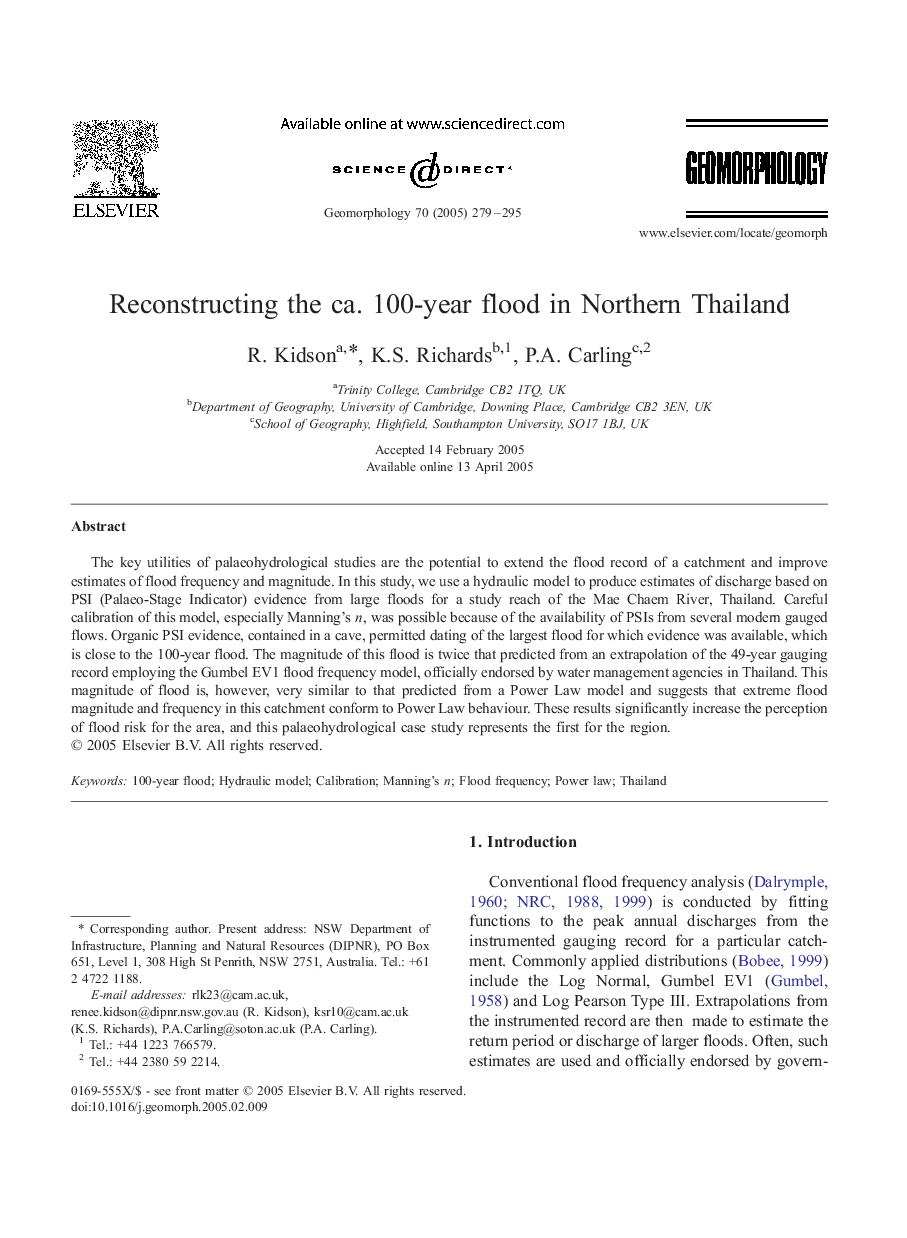| Article ID | Journal | Published Year | Pages | File Type |
|---|---|---|---|---|
| 9524822 | Geomorphology | 2005 | 17 Pages |
Abstract
The key utilities of palaeohydrological studies are the potential to extend the flood record of a catchment and improve estimates of flood frequency and magnitude. In this study, we use a hydraulic model to produce estimates of discharge based on PSI (Palaeo-Stage Indicator) evidence from large floods for a study reach of the Mae Chaem River, Thailand. Careful calibration of this model, especially Manning's n, was possible because of the availability of PSIs from several modern gauged flows. Organic PSI evidence, contained in a cave, permitted dating of the largest flood for which evidence was available, which is close to the 100-year flood. The magnitude of this flood is twice that predicted from an extrapolation of the 49-year gauging record employing the Gumbel EV1 flood frequency model, officially endorsed by water management agencies in Thailand. This magnitude of flood is, however, very similar to that predicted from a Power Law model and suggests that extreme flood magnitude and frequency in this catchment conform to Power Law behaviour. These results significantly increase the perception of flood risk for the area, and this palaeohydrological case study represents the first for the region.
Related Topics
Physical Sciences and Engineering
Earth and Planetary Sciences
Earth-Surface Processes
Authors
R. Kidson, K.S. Richards, P.A. Carling,
